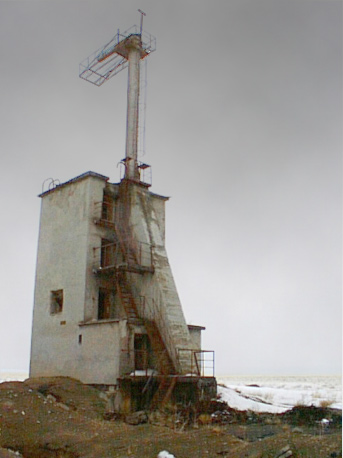NRI land use planner Dr Robert Ridgway is visiting Kazakhstan from 18 September to 2 October to commence the implementation phase of the DFID-funded project ‘Land Use Plan for the Semipalatinsk Test Site.’ Robert is project manager and land use planner, and NRI Associate Nick Hodgson is the project's GIS expert. The NRI specialists, provided through NR International Ltd, are working with a consortium team led by Mouchel Consulting Ltd with Dr Peter Coughtrey as project director.
The former Soviet nuclear weapons test site near Semipalatinsk in Kazakhstan was used for atmospheric and underground tests from 1949, including the former Soviet Union's first nuclear device in August 1949 and first hydrogen bomb in August 1953. It was formally closed by the President of Kazakhstan in August 1991. During active testing, the site encompassed about 18,000 km² of steppe and supported an infrastructure employing almost 400,000 people. Nuclear testing at the Semipalatinsk site profoundly damaged the communities in the region. Even today, people in these communities face a web of hardship that destabilizes their lives.

© University of Greenwich
In 1998, the UN General Assembly requested resources for a major programme of rehabilitation - the Semipalatinsk Rehabilitation and Relief Programme. The priorities included the preparation and implementation of a participatory sustainable land use plan for the site, and it was this aspect to which DFID agreed a commitment in 1999 and subsequently commissioned the current project for this purpose. The UK consortium members are teamed with partners from Kazakhstan to work with local populations to understand and reduce the risks associated with the test site.
Robert Ridgway is providing managerial services to all the technical and administrative project activities in Kazakhstan. These involve: radioecology and environmental risk assessment; radiation monitoring techniques and interpretation; land use planning; GIS development and implementation; research and analysis of livelihood systems at village level; training, capacity building and group formation; environmental education and advocacy on rights; water resource management; mineral exploitation impacts and management; review of environmental legislation; and overall project management from offices in Semipalatinsk and Almaty.
As land use planner, Robert will be involved in: overseeing natural resources data collection in the test site area for input into a GIS; technical aspects of land suitability evaluation and participatory land use planning; and linking these to key national and local stakeholders. The GIS expert, Nick Hodgson, will: oversee the installation and functioning of a GIS facility at the Ministry of Environment offices in Semipalatinsk; liaise with national consultants in GIS training and data production to ensure that these are acceptable and pertinent to the needs of the project; and provide backstopping support for input of data and output of information from the GIS for land use planning.
During his current mission, Dr Ridgway will firstly visit Kurchatov, where the nuclear weapons were manufactured and where many data on the Test Site are still held, and will then go to Semipalatinsk for a Project Working Group meeting, where project partners will finalize work plans and milestones for all implementation activities. For further information on the project contact Dr Robert Ridgway (

